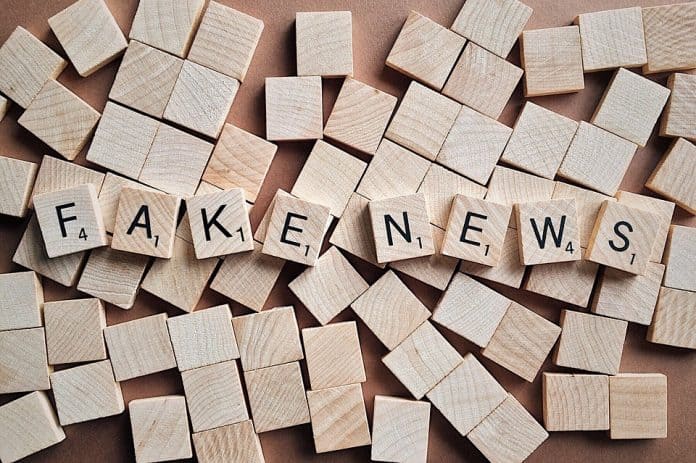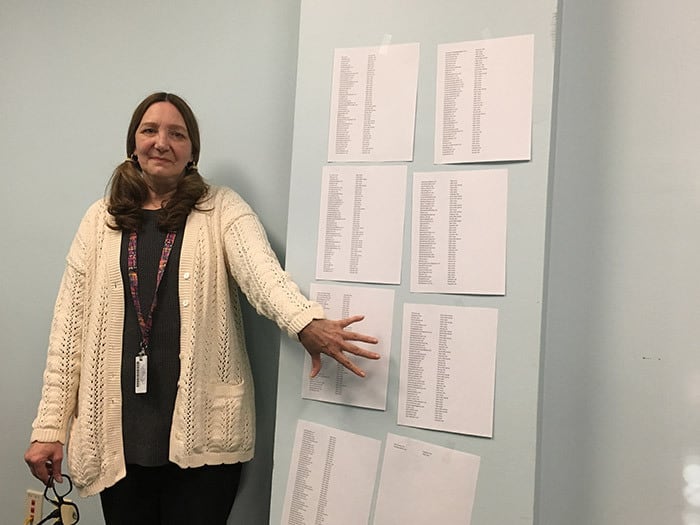
BRICK – You could wallpaper a room with lists of fake news sites, and the list continues to grow, said senior Ocean County library assistant in information services Elizabeth Bushong, who recently gave a PowerPoint presentation at the Brick Branch called “Fake News.”
“Fake news is made-up stuff that has been manipulated to look like credible journalistic reports that are spread online to large audiences willing to believe the fictions and spread the word,” Bushong said during her session.
It is a problem for many seniors, who might not be computer savvy, she added. When some are reading news on their computer, they need to know they’re looking at the right thing. Fake news sites can also be a problem for college students because their professors might be checking their sources, and using fake sites could affect their grade.
Many people worldwide cannot tell the difference between fake and real news, which can and does create confusion about important issues. Fake news spans all kinds of media, including printed, online, podcasts, YouTube, radio and images. Even the best researchers are fooled occasionally, she said.
“For example, Pope Francis did not endorse Donald Trump, but thousands of people shared the ‘news’ that he had done so. In the world of politics, being a misinformed citizen can be viewed as worse than being an uninformed citizen because misinformed citizens can state their beliefs and opinions with confidence and in turn affect elections and policies,” Bushong said.
Real news is presented by real news sources, which could be accompanied by a code of ethics or a mission statement. Real news is written by reporters with degrees in journalism with the goal of informing readers, she said.
“If you’re mad, scared, furious or anxious, you will want to investigate the article’s claims further,” Bushong said. “Real news can be verified. You should be able to find reports, statistics and other real news articles that support what you’re reading.”
There are even fake and misleading stories related to medical treatment and diseases, which could lead to harmful decisions relating to your health, Bushong said.
A person can become competent at learning whether news is fake or real through exercise and practice.
What makes a news story fake?
First, the story can’t be verified. Even a fake story could have fake links, but they may not lead to articles outside of the site’s domain or it may not contain information pertinent to the article topic, Bushong explained.
Other signs of fake news is it oftentimes appeals to your emotions, making the reader angry, happy or scared, and the news can’t be found on any other news outlet.
“Fake news comes from fake sites,” Bushong said. “Did your news come from abcnews.com.co? Or mercola.com? Realnewsrightnow.com? These and a host of other URLs are fake news sites,” she said.
Check the URL address itself: many credible academic databases end with .org, .edu or .gov.

Websites sometimes use “click bait” headlines, which is a term used to describe a sensational, eye-catching link to a web page that entices a visitor to read on. Most are fake news sites produced by organizations and advertisers to improve click rates and generate income, she said.
There are also satirical and comedy news sites, such as “The Onion” which readers might not realize are humorous and not factual, she said.
Bushong said that in order to find out if an article is fake ask yourself, what is the point the article is trying to make? What kind of language is being used? Are there lots of exclamation points and bold type words that get your attention? Does the article provide evidence for its claims from good sources such as medical journals or statistical sites? Can the information in the article being independently verified?
Also, is the author specialized in the field that the article is concerned with? You could check the author’s credentials by doing a Google search or checking Linkedin. Check the sources the author has used, Bushong suggested.
“If you can’t find sources, read as much about the topic as you can to get a feel for what’s already out there and decide for yourself if the article is accurate or not,” she said.
“If what you’re reading seems too good to be true, or too weird, or too reactionary, it probably is fake news,” she said. “Make sure to read an entire article before passing it on in your social media site to avoid embarrassing comments about its falseness,” she said.






